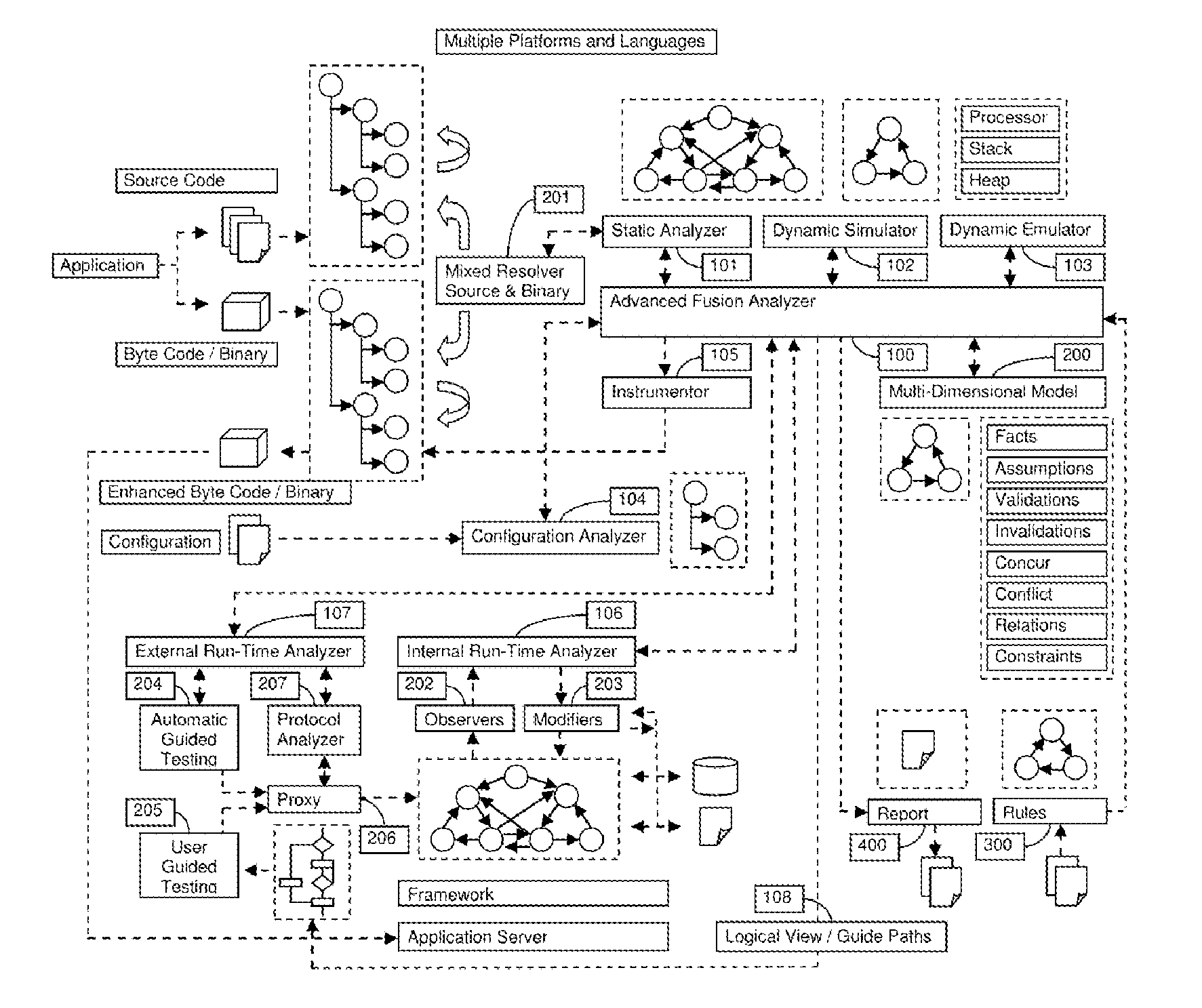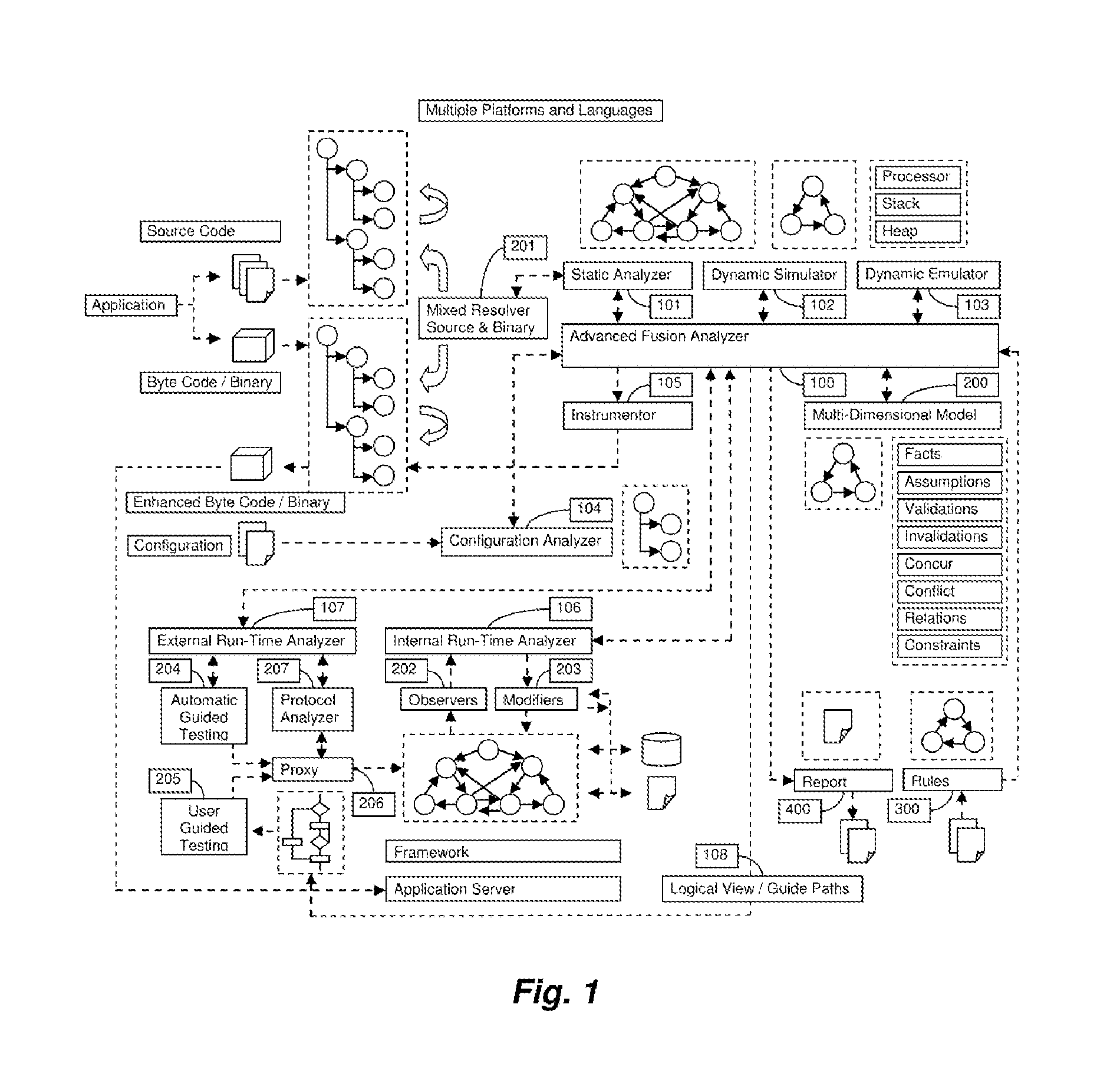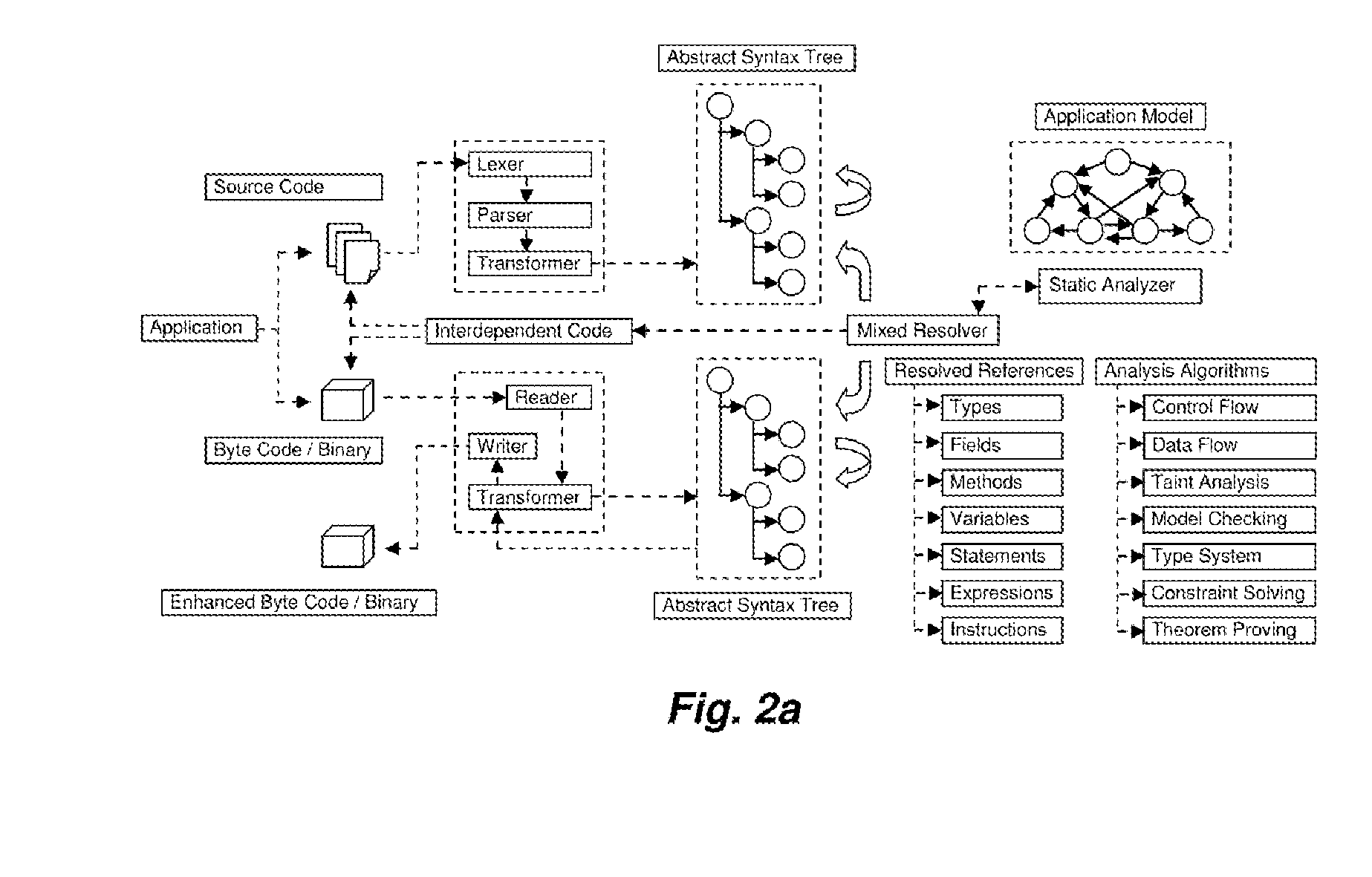The tremendous growth of
software development and reliance on
internet based applications for many aspects of modem life has also opened
doors for attackers to inflict serious damage to
software systems and steal
highly sensitive information, causing heavy financial and / or reputation loss to companies and organizations serving their customers / users through various
internet based applications.
Companies especially those with vulnerable applications face serious challenges in keeping their applications from being hacked as high-profile security breaches are becoming common.
1) Developers often overlook security aspect when designing or implementing software.
However, under pressure for delivering features for business, security aspect may be overlooked or ignored and it usually has no immediate consequences.
Also, business users normally cannot distinguish between secure and insecure software.
The risk introduced however when averaged over large number of applications makes this a short term
gain but a long term loss.
As a result large amount of insecure software is still being produced which cannot withstand attacks by highly motivated, focused and technically skilled attackers.
However, if there is a design level flaw then the cost of fixing can be high, often requiring large amount of design change and software rewrite.
Businesses are often not willing to invest large amount in securing software later especially when it is difficult to measure or gauge risk of an
attack.
When a security breach occurs it becomes difficult to justify why security considerations were not taken in the first place which could have avoided costly financial and / or reputation loss as well as costly fixes.
However, there is a serious flaw with this assumption.
Further, attackers can spend months with full focus on one suspected behavior of application and plenty of offline study and analysis to find and
exploit a single
vulnerability whereas a penetration tester typically only has few weeks per application to find vulnerabilities.
Further, finding all vulnerabilities with external checks only, whether manual or automatic or a combination of both is a scientifically flawed approach.
3) When it comes to
manual testing, there are large number of security categories and vulnerabilities which have to be checked on every use case, which is extremely difficult and
time consuming on a large application.
When it comes to automated
black box scanners, they face many challenges in both efficiently
crawling as well as coming up with right data as well as fuzzed data with no guarantee that they have touched every part of software on modern web 2.0 and complex multi-tiered applications.
Human errors inevitably occur and every member of
development team may not be expert in security aspects resulting in insecure software.
When it comes to
threat landscape, software which is considered secure today may no longer be considered secure tomorrow as new threats may emerge.
4) Measuring security posture of an application using manual or automated approaches that benchmark against limited categories of vulnerabilities can give a false sense of accuracy.
Even within these categories thorough analysis of
application logic for proper validations can be very difficult.
For example, if an application has
SQL injection flaw which is a type of injection flaw, there is often no need or motivation to find other flaws as
SQL injection itself is catastrophic.
As applications start hardening against these categories, attackers will start spending effort on other types of flaws such as logical flaws which are unique to application and the statistics will change.
Though, finding logical flaws automatically is extremely difficult and needs human effort as well but benchmarking against limited categories of vulnerabilities can give a false sense of accuracy.
Although
black box testing has advantages like being able to perform end-to-end tests, trying to find all vulnerabilities with external tests only is a scientifically flawed approach.
Thus
black box approach can often only see symptoms of a problem and not the
root cause of the problem.
However, black box analyzers also have many limitations which are described later.
Modem black box scanners are far more sophisticated and there are significant challenges that need to be overcome and effort required in building them.
However, modem applications are also not simple and can be significantly complex.
Modem applications like Web 2.0—
AJAX, RIA running in front of services exposed via protocols such as Web Services,
XML,
JSON, AMF by sophisticated multi-tiered
server side design on top of modern frameworks and having complex validations and
application logic can make performing accurate analysis very difficult for black box scanners.
1)
Crawling challenges—Web 2.0 applications like
AJAX and RIA both use much more complex
client side architectures with heavy active content driven by
client side
programming languages such as
JavaScript and
ActionScript, making significantly difficult for black box scanners to crawl application effectively.
Crawling is no longer simple like
parsing or searching
HTML for links and recursively or iteratively repeating the steps with no duplicate links. Advanced black box scanners sometimes integrate browser engines to overcome some of the issues but even then
crawling fails in many cases or remains incomplete.
2) Protocol challenges—Add to the fact that there are many other richer protocols (than simple HTTP GET / POST with name value pairs) used by modern applications for communication between
client and
server such as Web Services,
XML,
JSON and AMF.
Black box scanners must understand these protocols and craft requests keeping structural
semantics of protocol intact in order to be able to proceed.
3) Right data challenges—For black box scanners to test effectively it is important to come up with both good input data as well as ability to craft proper fuzzed data. In any application if the input data is not proper then the underlying validation logic may prevent the actual
business logic which is often much deeper from running by rejecting input as incorrect. Crafting the right combination of input data to find deeper faults is extremely difficult by guess work. The inputs should not only be with proper data types but also with proper data values and in proper relation to one another, reference data and in context of the functionality. Although advanced black box scanners have lot of
heuristics built in to come up with data, it is impossible to be able to guess right input data or craft properly fuzzed data in all scenarios and perform deep analysis or uncover complex issues.
4) Training Mode—
Black box scanners often provide a
train mode when they are unable to overcome
crawling challenges or right data challenges. In this mode a user guides black box
scanner by using the application normally by going over the functionalities via a browser whose requests and responses are recorded by black box
scanner thus overcoming some of the challenges. But even with additional human effort this approach cannot increase accuracy of black box scanners beyond a certain point.
5) No
visibility into the internals of the application—This is the biggest limitation of black box scanners and a dead end when it comes to trying to increase accuracy beyond a certain point. Without any knowledge of the internal design or implementation of an application black box scanners cannot ensure that all areas of
application logic are covered or determine complex states in which
vulnerability will manifest itself. They have difficulty even in completely finding all entry points to the application. As a result black box scanners give high false negatives and also sometimes give false positives. The fundamental principle on which they work cannot guarantee
full coverage or high accuracy.
A black box approach at some point has to rely on guesswork,
trial and error or
brute force which 1) is not an efficient approach to solve the problem 2) can quickly become prohibitive because of large number or permutations and combinations required in determining correct state for detecting vulnerabilities.
However, because the analysis is static, run-time checks like actually starting the car and observing components in motion are not allowed.
However, codes in binary form do not contain rich type information as available in
byte codes and also have more complex and
variable length instruction sets.
7) Analysis Algorithms—In order to perform
control flow and
dataflow analysis various analysis algorithms like
type system analysis (to limit possible values based on types permissible on an operation), constraint solving (to find limited possible values and states based on constraints imposed), theorem proving and other algorithms are used but even after using these algorithms or because of practical limitations (such as finite computing, time and memory resources available) with them, it remains very difficult for static analyzers to perform accurate analysis in many cases.
As a result, because of various limitations, static analyzers often have to rely on approximate solutions such as
abstract interpretation which reduces the difficulty for analyzers but at the cost of less precise analysis.
Data originating from a source and ending up in a sink without validation may mark existence of
vulnerability.
However, even the above steps can be performed with wide varying degree of accuracy which can result in drastically different results.
For example a static analyzer which does not perform semantic analysis of
source code with nearly as much precision as a
compiler, will have considerable difficulty in producing accurate results.
Although
static analysis is a very important concept and a must for any serious analysis of application, there are many issues and limitations with current static analyzers.
1) In absence of very advanced logic required for performing accurate analysis beyond the state of the art and in some cases even practical limitations (
static analysis is still an evolving science and advanced analysis which can generate very accurate results is an extremely difficult scientific problem), static analyzers start making many assumptions along the way. As the analysis on a given path progresses the cost of making false or unproven assumptions starts growing exponentially and static analyzers end up generating large amounts of
noise.
2) Even after using analysis algorithms, branching,
variable number of looping,
virtual function calls (such as functions of interfaces or virtual functions of classes),
function pointer calls, delegate calls and other complexities can result in
exponential growth of possible paths and combinations making it very difficult for static analyzers to perform accurate analysis.
3) Modern applications written in object oriented languages often use reflection or make heavy use of frameworks with model-view-controller,
dependency injection and other types of patterns which can make it very challenging for static analyzers to perform accurate analysis. Although static analyzers try to overcome some of the framework related issues by reading configuration information used by the frameworks and try to mirror semantically identical behavior during analysis (as the framework would have performed during actual execution) it is not always effective.
4) Even after using analysis algorithms, static analyzers continue to face considerable challenges and limitations in determining accurately if logic between source and sink represents validation or not and whether that validation is sufficient or not. This can result in large number of false positives if static analyzer on
safer side decides to mark it as potentially vulnerable. Some static analyzers rely on users to mark certain functions as safe introducing critical dependency on human skills in analysis and along with it chances of error.
Further, due to limitations of correlation logic and inability to correlate all common findings there may still be duplicate findings across both DAST and SAST analyzers for same vulnerability in the report.
Also, since both DAST and SAST analyzers generate false positives, a sum of those undesirable results is inherited as well.
DAST analyzers can only show flaws externally as request / response (input / output) with no internal insight while SAST analyzers mostly show flaws internally (code level) lacking ability to reproduce the flaws externally.
1) Correlation itself is not a solution to the problem of finding vulnerabilities accurately. Correlation simply cannot overcome fundamental limitations or deficiencies of the analyzers including vulnerabilities missed by both the analyzers. It is not possible to show vulnerabilities by simple correlation beyond the at best sum (or more accurately superset) of the results of two approaches. The only way to truly improve results is by improving accuracy of the analyzers. Correlation is only a mechanism to overcome the
visibility limitations of both types of approaches by giving a unified view of vulnerability.
2) If correlated vulnerabilities are given higher priority over vulnerabilities that are not correlated while reporting or fixing them, it can prove risky. Correlation is not same as severity or exploitability. Simply because vulnerabilities could not be correlated does not necessarily make them less severe or false positive. There are many
high severity vulnerabilities that can only be found by one type of approach. Relying on correlation as an indication of severity, exploitability or remediation priority can give a false sense of security.
3) While performing correlation to improve
visibility looks good in theory, in reality the way it is implemented technically has its own limitations. In order to correlate results of DAST and SAST analyzers a
common element is needed which can be used to bind the two types of findings. Usually this
common element is URL or request. While DAST findings always have a URL, translating SAST findings (
source code) to URL can turn out to be both difficult and imprecise.
First the URL to source
mapping techniques used by different frameworks can vary widely. In order to be able to create URL to source mapping, different implementation is required for every type of framework and challenges associated with minoring exact behavior of frameworks for deriving proper URL to source mapping can result in inaccurate or incomplete correlation. In addition, DAST findings and SAST findings are not one to one. Because DAST approach looks at symptoms many DAST findings (symptoms) can point to same SAST finding (
root cause). Also an application may have different logic based on different values coming from a URL or request in which case, a signature of URL or request without value is not an indication of same logic and cannot be considered as a perfect correlation element.
Secondly, simply passing new URLs without proper values and context does not give enough information to DAST
scanner for performing proper analysis.
While these approaches do improve detection of problems and hence improve accuracy, they are not a replacement for performing
white box (or a detailed part by part inspection).
That is because sensors can only sense certain points of the system.
A loose nut on a
chassis or cracks or complex electrical or mechanical issues can only be detected by detailed inspection.
However, when the patient is connected via sensors (electrodes) for measuring internal activity with an electrocardiogram (ECG or EKG)
machine, the doctor can get far better information otherwise not possible externally.
This is a simple shortcut approach, however as with many shortcut approaches there are many limitations as well.
1)
Hybrid 2.0 additionally uses sensors to send information to black box scanners while a test is happening. This is a certainly an improvement over purely relying on response or output for finding problem. However, simply introducing sensors and shifting visibility point to certain locations cannot guarantee comprehensive coverage or high accuracy. For example even though a
Hybrid 2.0 may put sensor to detect certain source and sink function calls the entire application logic in between is still black box for the scanner. Sensors can only solve some part of the problem and are not replacements for
white box analysis.
2) Hybrid 2.0
performance improvement is limited by the number of sensors and the type of information they can send. Moreover, having predefined known signatures for sensing the function calls limits the findings only to those related with the signatures.
3) Hybrid 2.0 heavily relies on run-time monitoring of application using sensors while a test by DAST scanner is happening. A sensor sends information to DAST only when a call has actually been made. If a sink function is not called because of some complex logic blocking flow between source and sink functions then the scanner cannot detect vulnerability. The exact
payload required to get to all possible parts of code can be very challenging.
4) Hybrid 2.0 approach has improved correlation mechanism than
hybrid approach. However, as described in
Hybrid approach section, correlation itself is not a solution to the problem of finding vulnerabilities accurately.
5) Hybrid 2.0 approach has improved feedback mechanism in real-time to improve dynamic coverage including detecting hidden parameters. However, as described in
Hybrid approach section, proper values and context are also needed by dynamic scanners which may not be easy all the time.
6) Hybrid 2.0 approach cannot bring any improvement to analysis of code which it is unable to cover from DAST scanner and at best can report only the same SAST scanner findings in those cases.
A number of factors may lead to poor coverage, including imprecise symbolic representations, incomplete theorem proving and failure to search the most fruitful portion of a large or infinite path tree.
Additionally, concolic testing cannot get past functions which generate large symbolic representations.
There cannot be any gains on paths which concolic testing is unable to reach.
Thus, there are many limitations of current approaches and significant amount of human effort is needed to find additional vulnerabilities missed by these approaches (false negatives) and / or filter genuine vulnerabilities from reported ones (false positives).
 Login to View More
Login to View More  Login to View More
Login to View More 


